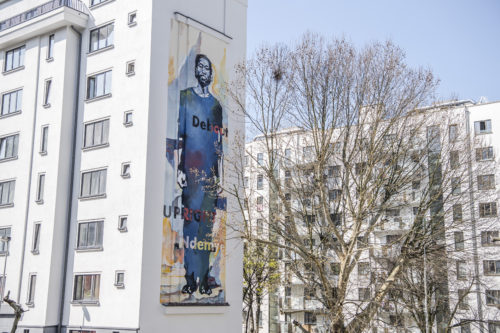Web history
Muyira Arts et Mémoire
Founded in 2014, Muyira – Arts et Mémoire is a non-profit organisation who focus their work primarily in two areas. The first concerns the remembrance of crimes of genocide and crimes against humanity. They have a special section devoted to the genocide perpetrated against the Rwandan Tutsi in 1994, which has been officially recognised by the United Nations. Muyira offers a range of educational approaches, including the use of artistic expression as a means of recounting and reflecting on these crimes. Their campaigns also extend to the fight against all forms of racism, xenophobia, sexism and homophobia. The organisation’s secondary focus is on artistic creation and dissemination in a variety of forms.
Project “Debout. Be “
Debout. Be (“Upright. Be”) is a project run by the Muyira- Arts et Mémoire non-profit organisation, based on the concept of Upright Men by visual artistBruce Clarke. Twenty-five years after the Rwandan genocide (1994), this work of art aims to keep the memory of its victims alive. The project involves painting a permanent figure of an upright man on a Brussels façade and organising cultural and educational events around the piece.
Les Hommes debout (“Upright Men”) is an art project to honour the memory and dignity of the victims of genocide and other crimes against humanity, born of Bruce Clarke’s long reflection on power relations and racism. The project began as a tribute to the victims of the 1994 Tutsi genocide in Rwanda, in response to a request from the CNLG (National Commission for the Fight against Genocide) to source artistic forms of remembrance, which could be presented during ceremonies commemorating the Rwandan Tutsi genocide. The project involves painting larger-than-life – up to 10 metres high – figures of men, women and children. These figures will appear to passers-by as silent yet embodied images, sketched but with a bold presence, anonymous yet familiar characters, symbols of the dignity of human beings confronted with the implicit dehumanisation of genocide. These Upright Men stand to bear witnesses to a painful history. The intention is to give these lost souls a renewed place in society, to restore the individuality of the victims, and to give them back their dignity. In the run-up to the 20th commemoration of the Rwandan Tutsi genocide, the Upright Men were on display in several places around the world. The aim was to raise awareness of the history of the Rwandan genocide and of the events of 1994 within the international community, and to create a bridge between Rwandans and the rest of the world. A highly symbolic exhibition of Upright Men on kakemonos was displayed on the wall of the Brussels City Museum at Grand-Place. This display was only temporary, however, but the non-profit organisation Muyira- Arts et Mémoires, visual artist Bruce Clarke and the City of Brussels were all hoping to create a more permanent artwork. This wish came true thanks to Logements Bruxellois, who have graciously loaned the façade of one of their buildings for this important artwork.
